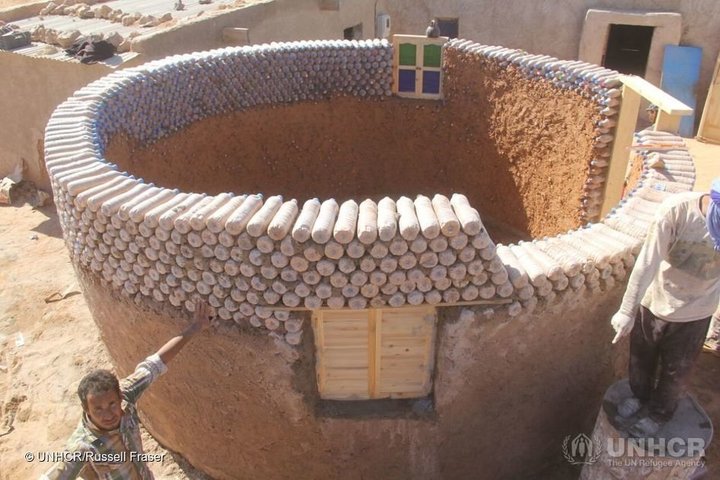When researchers travelled to a tiny, uninhabited island in the middle of the Pacific Ocean, they were astonished to find an estimated 38 million pieces of trash washed up on the beaches.
Almost all of the garbage they found on Henderson Island was made from plastic. There were toy soldiers, dominos, toothbrushes and hundreds of hardhats of every shape, size and color.
The researchers say the density of trash was the highest recorded anywhere in the world, despite Henderson Island’s extreme remoteness. The island is located about halfway between New Zealand and Chile and is recognised as a UNESCO world heritage site.
HuffPost | Par Sarah Ruiz-Grossman
Publication: 26/06/2017 16h33 CEST Mis à jour: 27/06/2017 13h13 CEST
In a refugee camp in the Sahara desert, a man makes more sustainable homes in the face of difficult weather conditions. To do this, he uses garbage.
Tateh Lehbib Breica, a Sahrawi refugee living in a camp in Tindouf, Algeria, builds houses for other refugees from plastic bottles filled with sand, as we can see in this video posted on Facebook by the High Commissioner of the United Nations (UNHCR). Read more on the original document.
Video published by WEF (https://youtu.be/gg_BeXeBXV4)





/http%3A%2F%2Fwww.mena-forum.com%2Fwp-content%2Fuploads%2F2017%2F06%2FArmenians-Reverse-Diaspora-1080x675.jpg)
/http%3A%2F%2Fwww.mena-forum.com%2Fwp-content%2Fuploads%2F2017%2F05%2FImage-Climate-Action-Tracke.png)
/http%3A%2F%2Fwww.mena-forum.com%2Fwp-content%2Fuploads%2F2017%2F05%2FGreen-Finance-intro-pic.jpg)
/image%2F2151118%2F20170504%2Fob_b252ac_wef-mena-summit-2017.jpg)